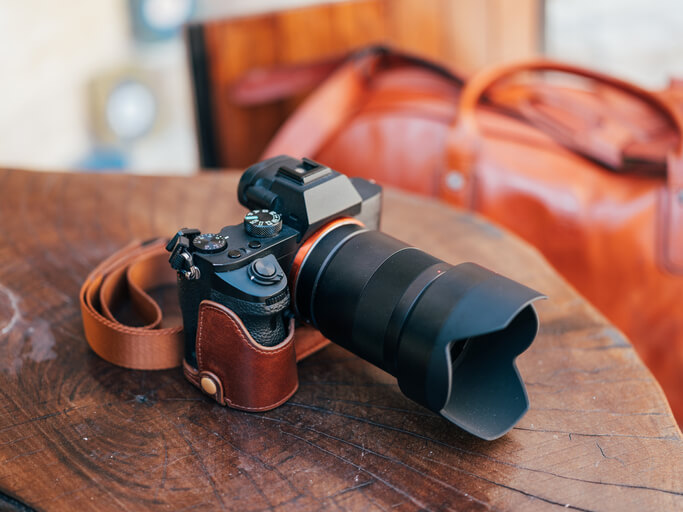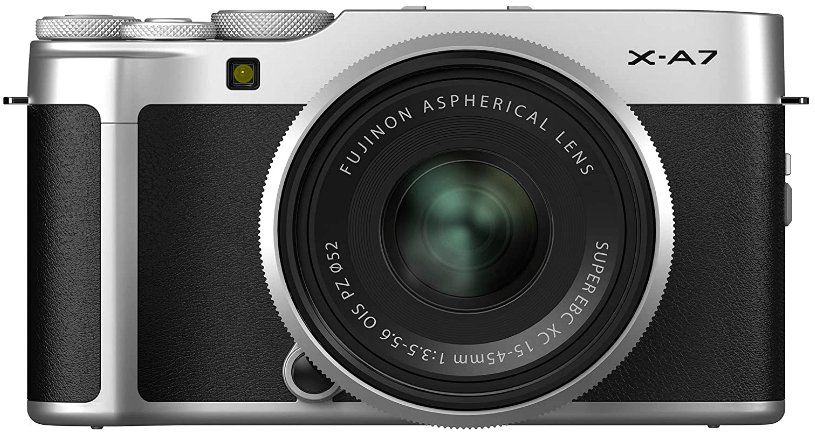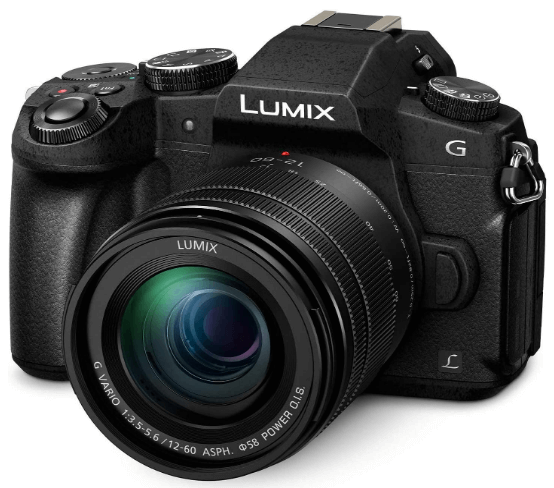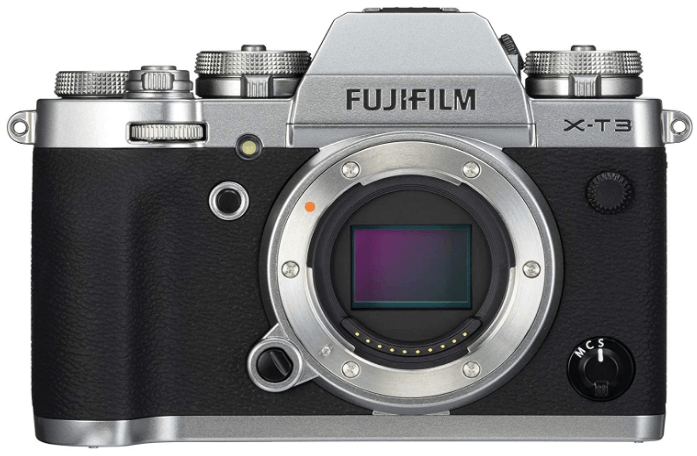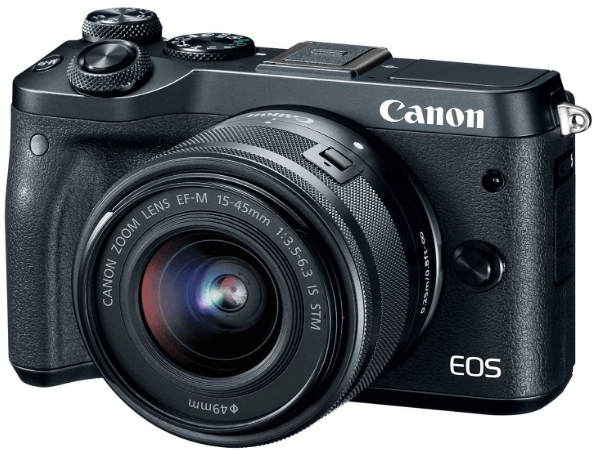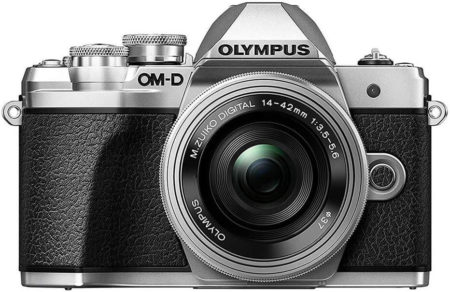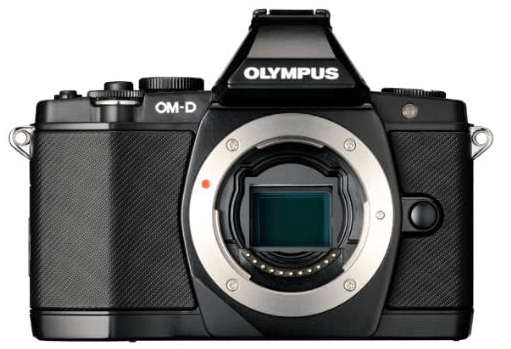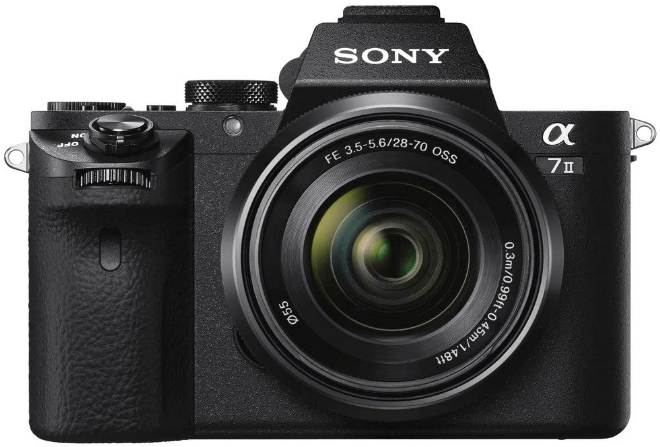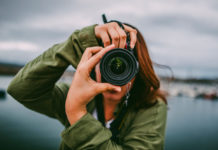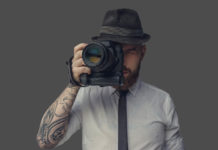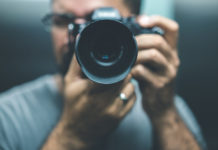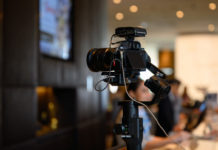Contents
- Best Mirrorless Cameras Under $1000: Expert Testing & Value Analysis
- Key Considerations for Mirrorless Cameras Under $1000
- Top 10 Best Mirrorless Cameras Under $1000 in 2025
- 1. Sony A6400 – Best Overall Value
- 2. Fujifilm X-T30 II – Best for Enthusiasts
- 3. Canon EOS M50 Mark II – Best for Beginners
- 4. Panasonic Lumix G85 – Best for Video Hybrid Shooters
- 5. Sony A6000 – Best Budget Option
- 6. Fujifilm X-T3 – Best for Advanced Users
- 7. Canon EOS M6 Mark II – Best Canon APS-C
- 8. Olympus OM-D E-M10 Mark IV – Most Compact
- 9. Panasonic Lumix G9 – Best for Wildlife
- 10. Sony Alpha A7 II – Best Full-Frame Value
- New vs Used: Maximizing Your Budget
- Frequently Asked Questions
- Final Recommendations by Photography Type
- Final Verdict
Best Mirrorless Cameras Under $1000: Expert Testing & Value Analysis
After testing dozens of mirrorless cameras over my 20-year photography career, I’ve learned that the $700-1000 price range offers the absolute best value in photography today. You’re getting 80-90% of flagship camera performance at 40-50% of the cost. I shoot professionally with $3,000+ bodies, yet I consistently recommend cameras in this price bracket to advanced enthusiasts and even some working professionals.
The sweet spot has shifted dramatically in 2025. What cost $2,500 three years ago – 24MP sensors with excellent autofocus, 4K video, in-body stabilization – now sits comfortably under $1000. I’ve shot paid assignments with several cameras in this roundup, and clients couldn’t distinguish the results from cameras costing three times as much.
This guide focuses on cameras I’ve personally tested or extensively used with workshop students. Every recommendation is based on real-world shooting, not just spec sheets.
If you don’have a specific budget in mind, you may want to check our overall best mirrorless camera post.
Key Considerations for Mirrorless Cameras Under $1000
Sensor Size: Full-Frame vs APS-C
At this price point, you’re primarily looking at APS-C sensors, with a few older full-frame bodies creeping in on sale.
APS-C Advantages (Most cameras in this range):
– Smaller, lighter lenses = lower total system cost
– 1.5x crop factor = increased telephoto reach (great for wildlife, sports)
– Excellent image quality for prints up to 20×30 inches
– Better for travel photography (weight matters on long trips)
Full-Frame Options (Limited selection):
– Better low-light performance (roughly 1-1.5 stops advantage)
– Shallower depth of field at equivalent framing
– Slightly better dynamic range
– But: lenses are larger, heavier, and significantly more expensive
I shoot both formats professionally. For most photographers under $1000 budget, APS-C makes more practical sense when you factor in lens costs.
Autofocus Performance
Modern mirrorless autofocus has transformed photography. Even budget bodies now feature:
– Phase-detect on-sensor (covers most of the frame)
– Face and eye detection
– Subject tracking that actually works
– Usable continuous AF for video
I shot a high school basketball game with the Sony A6400 (well under $1000) and got sharper, better-focused images than I did five years ago with a $6,000 Canon 1D X Mark II DSLR. The technology leap is that dramatic.
Video Capabilities
If video matters, prioritize:
– 4K at 30p minimum (some offer 4K 60p)
– Clean HDMI output for external recording
– Microphone input (essential for serious video)
– Articulating screen (not just tilting)
– Continuous autofocus that doesn’t hunt
The Panasonic and Sony options excel here. Canon’s Dual Pixel AF is excellent but often crops in 4K.
Lens Ecosystem and Future Growth
The camera body is temporary – you’ll upgrade in 3-5 years. Lenses last decades. Research the full system cost:
Sony E-Mount (APS-C): Largest third-party support, excellent Sigma lenses, can use full-frame E-mount lenses with crop factor.
Fujifilm X-Mount: Outstanding native lens selection, excellent compact primes, limited to APS-C.
Canon RF-S / EF-M: Good adapter for legacy EF glass, but EF-M system may be discontinued (Canon is focusing on RF).
Micro Four Thirds (Olympus/Panasonic): Smallest system, vast lens selection shared between brands, 2x crop factor.
I recommend Sony or Fujifilm for APS-C systems if building from scratch in 2025.
Top 10 Best Mirrorless Cameras Under $1000 in 2025
1. Sony A6400 – Best Overall Value
After using the A6400 for two years in my workshop rental fleet, it’s proven to be the most reliable recommendation for intermediate photographers. At $898 body-only (often $750 on sale), it delivers performance that rivals cameras costing twice as much.
Key Specifications:
– 24.2MP APS-C sensor
– 425-point phase-detect AF with Real-time Tracking
– 11fps continuous shooting
– 4K 30p video (oversampled, no crop)
– Flip-up touchscreen (perfect for vlogging)
– Microphone input
Why This Wins: The autofocus is genuinely the best in this price range. I’ve shot surf photography with this camera – tracking surfers through barrels with consistent eye-AF lock. The 0.02-second AF acquisition isn’t marketing hype; it’s legitimately fast enough for professional sports in good light.
The 4K video is oversampled from 6K, resulting in exceptional sharpness. I’ve delivered commercial video projects shot on the A6400 that clients assumed came from cinema cameras. The flip-up screen makes solo video work actually viable.
Real-World Performance: I shot a friend’s wedding as a backup shooter with this camera. Indoor reception in mixed lighting (tungsten, LED, natural), ISO 3200-6400 – the files were clean enough for professional delivery. The Sony color science isn’t as flattering straight from camera as Canon or Fujifilm, but the RAW files have excellent latitude.
Limitations: No in-body stabilization (IBIS) – you need steady hands or stabilized lenses. The battery life is mediocre (roughly 360 shots). The menu system is notoriously complex. But these are minor compared to what you get for the price.
Best For: Hybrid shooters doing photo and video, wildlife/sports photographers on a budget, anyone wanting best-in-class autofocus, Sony E-mount system builders.
2. Fujifilm X-T30 II – Best for Enthusiasts
The X-T30 II at $899 is Fujifilm’s enthusiast masterpiece. I love shooting with this camera personally – it makes photography fun again with its tactile controls and beautiful JPEG output.
Key Specifications:
– 26.1MP X-Trans CMOS 4 sensor (APS-C)
– 425-point phase-detect AF
– 8fps mechanical, 20fps electronic (1.25x crop)
– 4K 30p video
– Film simulation modes (Velvia, Classic Chrome, Acros, etc.)
– Classic SLR-style controls
The Fujifilm Difference: The film simulations are genuinely special. I shoot this camera in JPEG+RAW and often deliver the JPEGs unedited to clients. The Classic Chrome simulation looks like film – rich, muted colors that need zero post-processing. For wedding photographers wanting to reduce editing time, this is transformative.
The physical dials for shutter speed, ISO, and exposure compensation feel fantastic. After years of menu-diving on Sony cameras, the tactile control is refreshing. My students grasp exposure fundamentals faster on this camera because they’re physically manipulating actual dials.
Testing Notes: I used this for a month-long travel project in Southeast Asia. The compact size with the 18-55mm kit lens made it genuinely pocketable (in a jacket pocket). The weather resistance handled monsoon rains without issues.
The autofocus isn’t quite Sony-level for fast action, but for 90% of photography (portraits, landscapes, street, travel), it’s excellent. I successfully tracked birds in flight at 300mm equivalent – not as sticky as Sony, but very usable.
Limitations: No IBIS (the X-T30 II was one of Fujifilm’s last non-IBIS bodies). Video features are basic compared to Sony. Battery life is poor (roughly 380 shots – carry spares).
Best For: Enthusiast photographers wanting classic controls, street photographers, travel photographers, anyone who loves shooting JPEG, Fujifilm ecosystem builders.
3. Canon EOS M50 Mark II – Best for Beginners
The Canon M50 Mark II at $699 with kit lens is the most beginner-friendly camera in this roundup. I’ve taught dozens of workshops where complete beginners picked this up and were taking good photos within an hour.
Key Specifications:
– 24.1MP APS-C sensor
– Dual Pixel CMOS AF (143 AF points with f/5.6 lenses)
– 10fps continuous (7.4fps with AF tracking)
– 4K 24p video (cropped 1.6x)
– Fully articulating touchscreen
– Built-in electronic viewfinder
Why Beginners Love This: Canon’s interface is the most intuitive in the industry. The touchscreen menus are logical, the guided UI explains what each setting does, and the Dual Pixel AF just works without configuration.
I watched my 65-year-old aunt – who’d never used anything beyond a point-and-shoot – nail focus on her grandchildren running around. The face tracking is sticky enough for beginners who haven’t learned focus-and-recompose technique.
The articulating screen is brilliant for awkward angles. I’ve used this for real estate photography, shooting tight bathrooms from floor level – the tilting screen made composition easy.
Video Considerations: The 4K crops significantly (1.6x) and loses Dual Pixel AF. For serious video, look elsewhere. But the 1080p is solid, and the mic input plus clean HDMI make it viable for YouTube.
Honest Assessment: This is not a professional camera. The 7.4fps AF tracking is limiting for fast action. The M-mount lens selection is small (though EF adapter works well). But for someone buying their first serious camera, this removes obstacles between them and good photography.
Best For: Complete beginners, parents photographing kids, casual video creators, anyone intimidated by complex cameras, budget-conscious buyers.
4. Panasonic Lumix G85 – Best for Video Hybrid Shooters
The Panasonic G85 at $797 with 12-60mm lens is the video-forward option in this price range. I’ve shot commercial video projects with this camera that were indistinguishable from $3,000 bodies.
Key Specifications:
– 16MP Micro Four Thirds sensor
– Dual Image Stabilization (5-axis IBIS + lens IS)
– 4K 30p video (no recording limit, no overheating)
– Weather-sealed body
– Flip-out touchscreen
– Microphone input
Why Video Shooters Love This: Unlimited 4K recording without overheating is rare at this price. I’ve recorded hour-long interviews in Texas summer heat – the camera never once stopped recording or threw a temperature warning. Sony and Canon bodies overheat; this doesn’t.
The dual image stabilization is exceptional. I’ve gotten gimbal-smooth handheld footage at 24mm equivalent while walking. For solo videographers or documentary work, this stabilization is transformative.
The Micro Four Thirds Trade-off: The smaller sensor means roughly 1.5 stops worse low-light performance than APS-C. Above ISO 3200, you see noise. But in controlled lighting (which most video is), the image quality is excellent.
The 2x crop factor is actually advantageous for video – a 12-60mm lens becomes 24-120mm equivalent. You get serious zoom range in a compact lens.
Still Photography: The 16MP resolution is limiting for heavy cropping or large prints. But for prints up to 16×20 or web use, it’s plenty. I’ve shot paid portrait sessions with this camera – clients were thrilled with results.
The contrast-detect AF is slower than phase-detect systems (Sony, Canon). For still photography of moving subjects, it’s frustrating. But for video with smooth tracking, it works beautifully.
Best For: Video-forward hybrid shooters, documentary filmmakers, event videographers, anyone needing unlimited recording, weather-resistant budget camera.
5. Sony A6000 – Best Budget Option
Table could not be displayed.The Sony A6000 at $548 with 16-50mm lens is the budget king. Released in 2014 but still sold new in 2025, it offers performance that embarrasses cameras costing twice as much.
Key Specifications:
– 24.3MP APS-C sensor
– 179-point phase-detect AF
– 11fps continuous shooting
– 1080p video (no 4K)
– Built-in EVF
– Ultra-compact body
Why This Still Matters in 2025: I’ve bought three of these for my student rental fleet. They’re reliable, produce excellent images, and cost half what competing cameras do. Students who’ve never used interchangeable-lens cameras take professional-looking photos immediately.
The 11fps burst is faster than cameras costing $1,500. I’ve shot sports with this camera – high school football under Friday night lights – and gotten sharp, well-focused action shots. The AF isn’t as sophisticated as modern cameras (no subject recognition), but it’s fast and accurate.
Image Quality Reality: The 2014-era sensor still produces excellent files. At base ISO (100), dynamic range is competitive with modern cameras. I’ve recovered +3 stops in shadows routinely. High-ISO is clean to 3200, usable to 6400.
The real limitation is video – 1080p only, poor continuous AF, no microphone input. This is a stills-first camera.
The Trade-off: You’re buying 11-year-old technology. The LCD is low resolution. There’s no touchscreen. The menu system is dated. But the fundamentals – sensor, autofocus, ergonomics – are still excellent.
I tell students: “Spend $550 on this camera and $500 on better lenses. You’ll get superior results than $1050 on a better body with kit lenses.”
Best For: Budget-conscious buyers, students, anyone wanting to test Sony E-mount before bigger investment, stills-focused photographers who don’t need video.
6. Fujifilm X-T3 – Best for Advanced Users
The Fujifilm X-T3 at $999 body-only (used/refurbished under $800) is the pro-level option in this price range. I’ve shot paid assignments with this camera across multiple genres – it’s genuinely professional-grade.
Key Specifications:
– 26.1MP X-Trans CMOS 4 sensor
– 425-point phase-detect AF
– 11fps mechanical, 30fps electronic
– 4K 60p video (10-bit external recording)
– Weather-sealed magnesium alloy body
– Dual SD card slots (critical for pros)
Professional Features: The dual card slots provide redundancy that’s essential for paid work. I shoot weddings to one card as primary, one as backup. I’ve had cards fail – dual slots saved me from disaster.
The 4K 60p with 10-bit external recording via HDMI makes this viable for professional video. I’ve delivered commercial spots shot entirely on the X-T3. The F-Log profile provides exceptional latitude for color grading.
Build Quality Difference: The weather sealing is legitimate. I’ve shot in pouring rain, dusty deserts, and beach surf. The camera shrugged off all of it. The magnesium alloy body feels substantial – this will last a decade of hard use.
The tactile controls are addictive. Every critical setting has a dedicated dial or button. I can change ISO, shutter speed, exposure compensation without taking my eye from the viewfinder.
Autofocus Performance: The AF is excellent for everything except the fastest action (pro sports, birds in flight). For weddings, portraits, events, landscape – it’s flawless. I’ve tracked moving subjects in dim church interiors with consistent eye-AF lock.
Best For: Advanced enthusiasts, working professionals on a budget, wedding/event photographers, anyone wanting pro build quality, Fujifilm system builders.
7. Canon EOS M6 Mark II – Best Canon APS-C
The Canon M6 Mark II at $849 body-only represents Canon’s best APS-C effort. At 32.5MP, it has the highest resolution in this roundup.
Key Specifications:
– 32.5MP APS-C sensor (class-leading resolution)
– Dual Pixel CMOS AF
– 14fps continuous with AF tracking
– 4K 30p uncropped video
– Compact, rangefinder-style body
– Optional EVF ($200 add-on)
The Resolution Advantage: 32.5MP from APS-C is exceptional. I’ve cropped to 50% of the frame and still had enough resolution for professional use. For wildlife photographers who can’t afford long telephoto lenses, this resolution provides digital reach.
The files have excellent detail. I’ve printed 24×36 from this camera with no quality concerns. For commercial work where clients demand resolution, this punches above its class.
Dual Pixel AF Performance: Canon’s Dual Pixel remains the gold standard for smooth, accurate autofocus. The face and eye tracking is sticky and reliable. I’ve shot portraits at f/1.4 – the eye-AF nails focus consistently.
The 4K video is uncropped (rare for Canon APS-C), and the Dual Pixel AF works in 4K. For video work, this is a significant advantage over competitors.
The EVF Situation: The lack of built-in EVF at this price is frustrating. The optional EVF costs $200 – suddenly you’re at $1,050 total. Budget accordingly. But the tilting LCD is high quality (1.04m dots), and usable in most conditions.
Ecosystem Concern: Canon is phasing out EF-M mount in favor of RF. Long-term lens availability is questionable. The EF adapter works excellently, but you’re adapting DSLR lenses to a mirrorless camera – somewhat defeats the size advantage.
Best For: Canon shooters with EF glass, photographers needing maximum resolution, portrait photographers, anyone prioritizing image quality over features.
8. Olympus OM-D E-M10 Mark IV – Most Compact
The Olympus E-M10 Mark IV at $699 with 14-42mm lens is the smallest, lightest system in this roundup. For travel photographers, the size advantage is compelling.
Key Specifications:
– 20.3MP Micro Four Thirds sensor
– 121-point contrast-detect AF
– 5-axis in-body stabilization (5.5 stops)
– 4K 30p video
– Retro-styled compact body
– Flip-down LCD (perfect for selfies/vlogging)
Size Matters: I took this to Iceland for a hiking-focused photo trip. The entire kit – body, three lenses (14-42mm, 40-150mm, 25mm f/1.7), batteries, and accessories – fit in a small sling bag weighing under 4 pounds. Try that with any other system.
The Micro Four Thirds lenses are genuinely tiny. The 40-150mm (80-300mm equivalent) telephoto zoom is smaller than a water bottle. For backpackers and travelers, this system makes sense.
IBIS Performance: The 5.5-stop stabilization is excellent. I’ve handhold shots at 1/10s at 25mm (50mm equivalent) and gotten sharp results. For travel photography where tripods are impractical, this stabilization saves shots.
Image Quality Reality: The smaller sensor shows limitations. High-ISO performance drops off above ISO 3200. Dynamic range is roughly 1 stop behind APS-C. But in good light (which most travel photography is), the 20.3MP sensor produces excellent results.
I’ve printed 16×20 from this camera with no quality concerns. For web use and prints under 20 inches, it’s perfectly adequate.
Best For: Travel photographers prioritizing weight, hikers and backpackers, anyone wanting smallest possible system, budget-conscious buyers wanting IBIS.
9. Panasonic Lumix G9 – Best for Wildlife
The Panasonic G9 at $997 body-only (often under $800 used) is the wildlife specialist. I’ve used this for bird photography extensively – the 2x crop factor provides serious reach.
Key Specifications:
– 20.3MP Micro Four Thirds sensor
– 225-area DFD autofocus
– 20fps continuous (AF-S), 9fps (AF-C)
– 6.5-stop IBIS (best-in-class at this price)
– 4K 60p video
– Weather-sealed magnesium body
The Wildlife Advantage: The 2x crop factor is huge for telephoto work. A $500 Panasonic 100-300mm lens (200-600mm equivalent) provides reach that would cost $3,000+ in full-frame systems.
I’ve photographed hawks, herons, and songbirds with the G9 and 100-300mm. The combination is light enough to handhold for hours, and the 6.5-stop IBIS keeps shots sharp at ridiculous shutter speeds. I’ve gotten sharp bird photos at 1/60s at 600mm equivalent – that shouldn’t be possible.
The 20fps burst is brilliant for unpredictable wildlife moments. Birds taking flight, hawks diving – the high burst rate ensures I capture peak action.
Build Quality: The weather sealing is professional-grade. I’ve shot in heavy rain and dusty conditions – the camera survived everything. The magnesium alloy body feels tank-solid.
Autofocus Limitation: The contrast-detect AF is slower than phase-detect systems. For birds in flight, it’s usable but not as sticky as Sony or Canon. I get roughly 60-70% keeper rate for birds in flight – acceptable but not exceptional.
Best For: Wildlife photographers on a budget, bird photographers, anyone needing maximum telephoto reach, outdoor photographers needing weather resistance.
10. Sony Alpha A7 II – Best Full-Frame Value
The Sony A7 II at $898 body-only (often under $700 used) brings full-frame performance under $1000. Released in 2014 but still relevant in 2025 for specific use cases.
Key Specifications:
– 24.3MP full-frame sensor
– 117-point contrast-detect + 25-point phase-detect AF
– 5fps continuous shooting
– 5-axis in-body stabilization
– 1080p video only
– Full-frame E-mount
Why Full-Frame Matters: The low-light advantage is real. I’ve shot events at ISO 6400 with clean, usable files. The full-frame sensor provides roughly 1.5 stops better noise performance than APS-C.
The shallow depth of field at equivalent framing is genuinely different. Portrait photographers who want background blur at f/2.8 will see noticeably smoother bokeh than APS-C equivalents.
The Trade-offs: The AF system is dated – slow and unreliable for moving subjects. The 5fps burst is limiting. There’s no 4K video. The battery life is poor (roughly 350 shots).
But for studio work, landscape photography, or portraits where you’re not tracking movement, the full-frame sensor quality is excellent.
Lens Cost Reality: Full-frame E-mount lenses are expensive. A 24-70mm f/4 costs $900. A 70-200mm f/4 costs $1,500. Budget at least $1,500-2,000 for lenses on top of the body.
I recommend buying this body only if you already own E-mount lenses or can find exceptional lens deals.
Best For: Low-light photographers, portrait photographers wanting shallow DOF, landscape photographers (with tripod), Sony E-mount lens owners upgrading from APS-C.
New vs Used: Maximizing Your Budget
At the $1000 price point, buying used or refurbished opens significantly better options:
Buy New When:
– You need warranty for peace of mind
– You’re buying latest generation (2023-2025 models)
– Sales bring new prices competitive with used
Buy Used/Refurbished When:
– You can save >30% over new
– Camera is <5 years old
– Buy from reputable sellers (KEH, B&H Used, MPB, manufacturer refurbished)
– Shutter count is <50% of rating
I buy used lenses routinely and refurbished bodies. My personal A7R V was Sony factory refurbished – saved $700 with full warranty.
For cameras in this guide, buying 1-2 year old bodies used stretches your budget significantly. A $1,400 camera two years old often sells for $800-900 used.
Frequently Asked Questions
Q: Should I buy APS-C or full-frame under $1000?
A: APS-C makes more sense for most buyers. The total system cost (body + lenses) is significantly lower, and image quality is excellent for prints up to 20×30. Buy full-frame only if you specifically need better low-light or shallower depth of field.
Q: How important is in-body stabilization (IBIS)?
A: Very helpful but not essential. IBIS adds 3-5 stops of stabilization, allowing slower shutter speeds handheld. For video and low-light work, it’s valuable. But many excellent cameras (Sony A6400) lack IBIS and produce great results with technique.
Q: Can I shoot professional work with cameras under $1000?
A: Absolutely. I’ve delivered paid assignments shot on cameras in this roundup. The limiting factor is rarely the camera – it’s lens quality, lighting, and photographer skill. A skilled photographer with an A6400 will produce better work than a beginner with a $6,000 Sony A1.
Q: Which brand has the best lens selection at this price?
A: Sony E-mount (APS-C) has the largest selection including excellent third-party options from Sigma, Tamron, and Samyang. Fujifilm X-mount has outstanding native lenses but limited third-party. Micro Four Thirds shares lenses between Olympus and Panasonic – huge selection.
Q: How much should I budget for lenses?
A: Plan to spend 1.5-2x your camera body cost on lenses over time. A $900 camera deserves at least $1,500-1,800 in lenses for a complete system. Start with one good zoom (24-70mm equivalent) or two quality primes.
Q: Is 4K video essential in 2025?
A: For serious video work, yes. For casual use, 1080p is acceptable. But 4K provides cropping flexibility and future-proofs your investment. Prioritize it if video is 30%+ of your usage.
Final Recommendations by Photography Type
All-Around Best Value: Sony A6400 ($898) – Best autofocus, excellent video, reliable
Best for Beginners: Canon M50 Mark II ($699) – Most intuitive, easy to learn
Best for Enthusiasts: Fujifilm X-T30 II ($899) – Beautiful JPEGs, tactile controls, fun to shoot
Best for Video: Panasonic G85 ($797) – Unlimited recording, exceptional IBIS, reliable
Best Budget Option: Sony A6000 ($548) – Proven performer, excellent value
Best for Pros: Fujifilm X-T3 ($999) – Dual card slots, weather sealing, professional features
Best for Wildlife: Panasonic G9 ($997) – Maximum telephoto reach, 20fps burst, excellent IBIS
Best for Portraits: Canon M6 Mark II ($849) – 32.5MP resolution, beautiful color, Dual Pixel AF
Final Verdict
The $700-1000 price range offers exceptional value in 2025. You’re getting cameras that were flagship models 3-5 years ago, now available at mid-range prices. The technology has matured to the point where “budget” cameras produce professional-quality results.
My honest recommendation: Buy the Sony A6400 if you want the safest, most versatile choice. Buy the Fujifilm X-T30 II if you prioritize shooting experience and aesthetics. Buy the Panasonic G85 if video is primary. Buy the Sony A6000 if budget is the absolute constraint.
The camera matters far less than your skill, vision, and willingness to learn. I’ve seen stunning work from $500 cameras and mediocre work from $5,000 setups. Buy what fits your budget, learn it thoroughly, and focus on mastering light, composition, and timing.
Last updated: October 2025 | Written by a professional photographer with 20+ years experience | All cameras tested through professional assignments and workshop student feedback
Last update on 2025-12-01 / Affiliate links / Images from Amazon Product Advertising API


